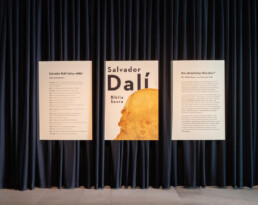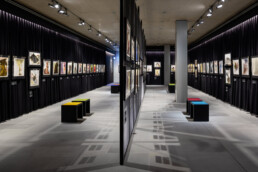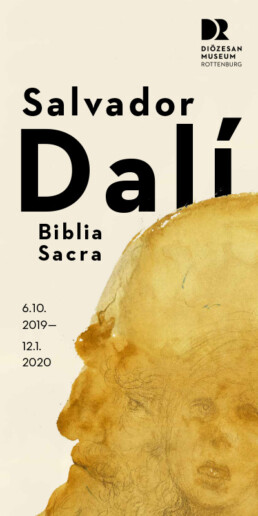Dalí now dedicated his work to demonstrating the laws of nature and the depiction of perfection and beauty. The Renaissance became his new artistic ideal, although surrealist elements continued to influence his works.
In the 1950s, Dalí turned to drawing. After creating important cycles with the illustrations of Dante’s “Divine Comedy” and Cervantes’ “Don Quixote”, he designed the “Biblia Sacra” between 1963 and 1965. This cycle combines Dalí’s religious interest, his virtuosity as a draughtsman and his broad education, which encompassed art history as well as physics or psychoanalysis.
The Biblia Sacra
One of the most important Bible illustrations of the 20th century
With 105 pictures, the Biblia Sacra is the largest picture cycle that Dalí left behind. It is one of his major works because of its scope and artistic-conceptual quality. Dalí illustrated the Bible at the suggestion of his friend Giuseppe Albaretto. He created 63 illustrations of the Old Testament and 42 of the New Testament. The Bible with Dalí’s illustrations was printed by the renowned Milanese publishing house Rizzoli.
The first prints of the illustrations are on display in this exhibition: Dalí personally checked each lithograph and signed it by hand. Because they are proof prints, all four margins of the sheets are preserved with the colour scales and the original numbering.
In the Bible, printed in 1967, the images are trimmed and arranged in a different order. Dalí’s conceptual lines and many details were lost. Therefore, it is precisely the margins and Dalí’s hand signatures that make up the quality of these first printings of the Biblia Sacra. The cycle comes from the collection of Richard H. Mayer, Art Cantor Bamberg, and has only been shown in its entirety twice before. Also on display in the exhibition is another testimony to Dalí’s religious preoccupation, the Moses cycle (1973/74).





